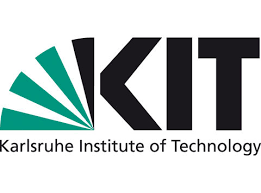Karlsruhe Institute of Technology: Learn from game developers: product development with extended reality
“In the automotive industry, ten percent of the entire development budget is often used for the production of prototypes,” says Marc Etri, head of the XR-Lab at the KIT Institute for Product Development (IPEK). “That can easily add up to many millions of euros.” Scientists at the IPEK want to reduce this effort: with Extended Reality (XR), i.e. computer technologies that add virtual components to the physical environment ( augmented reality, AR ), or replace them entirely ( Virtual Reality, VR ).
“XR technologies make it easier for us in all development phases – finding product profiles, creating, specifying and realizing concepts – adapting products to customer wishes and market requirements,” explains Etri. “Physical-virtual prototypes can save development time and costs as well as prevent errors that are often only recognized in later phases of development.” As an example, he shows the photo-realistic three-dimensional model of a racing bike that can be edited on a tablet. “I can change the design of wheels, frames or saddles with one click.” Even subtleties such as the color and degree of gloss of the seat post or the structure of the seat cover change with just a few clicks on the screen. Etri shows the possible level of detail of the program using the example of a wristwatch:
“Many engineers in practice do not even know what is already possible with AR and VR,” states Professor Albert Albers, head of the IPEK. “The game developers have long shown us how to do it,” adds Etri, referring to the popular blockbuster titles from the gaming sector with powerful images. Modern, customer-oriented product development often fails due to inconsistent data management in the departments or partner companies involved and the resulting lack of consistency, says Albers. “We cannot develop the solutions of the 21st century using the methods of the 20th century.” Engineering could benefit significantly from the new technologies and methods – of course also in the current pandemic situation:
The Extended Reality Lab in teaching at KIT
That is why the XR-Lab is used in research projects in basic research and with companies as well as in teaching: “In the past winter semester, we integrated virtual reality tasks into machine design for the first time,” says Etri. “Around 400 freshmen from the fields of mechanical engineering, biological and chemical engineering as well as mechatronics were able to learn to assess the potential of XR technologies in product development early on in their studies.” “This can have a massive impact on the choice of your preferred engineering tools in your future professional life.”

